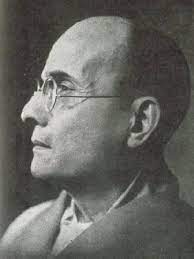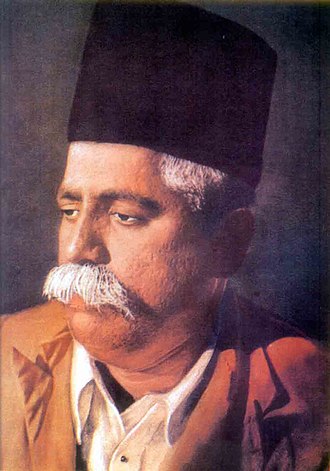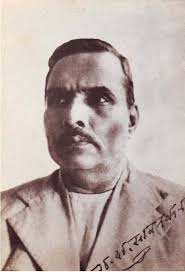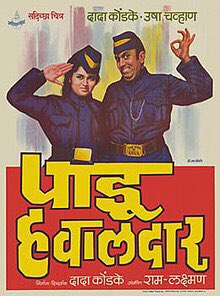It is claimed that #VDSavarkar had no relationship with the #RSS. But, this is not borne out of historical evidence. Read this thread to know more.
#Hindutva #SanghParivar #Hedgewar #HinduMahasabha #RahulGandhi #Congress #ShivSena #UddhavThackeray

#Hindutva #SanghParivar #Hedgewar #HinduMahasabha #RahulGandhi #Congress #ShivSena #UddhavThackeray


While in the Ratnagiri jail, where Savarkar was shifted in 1921 from the Cellular jail in the Andamans, he wrote his seminal work ‘Essentials of Hindutva,’ which laid the foundations of Hindutva as an ideology.
It laid emphasis on cultural nationalism as against a territorial one, and said that India was for the Hindus alone, and not for the Muslims or the Christians.
At Ratnagiri, Savarkar associated himself with the Hindu Mahasabha and issued an open appeal (10 June 1925) asking people to participate in its activities. This did not fall foul of the British as they did not consider it a political party, but a socio-religious organisation.
He launched a crusade against Hindu obscurantism by opposing untouchability, upholding the rights of lower castes to worship and educate themselves and promoted inter-dining. This attracted the ire of the orthodox sections, including Brahmins.
In March 1925, Dr Keshav Baliram Hedgewar met Savarkar at Shirgaon near Ratnagiri, where he was staying due to the plague epidemic in Ratnagiri town. 

Hedgewar had read a handwritten manuscript of Savarkar’s Hindutva and was influenced by its ideological postulation about the Hindus being a nation. He was also swayed by Savarkar’s assertion about the need for a volunteer force of Hindus.
Like Savarkar, his elder brother Ganesh aka Babarao played a major role in the formation of the RSS. On Vijayadashami day in 1925 and in the backdrop of communal tensions in the town, the RSS was launched at Nagpur with Babarao 

among the founding members with Hedgewar, Dr B.S. Moonje, Dr L.V. Paranjape, Dr B.B. Tholkar. RSS men had an overlapping membership of the Hindu Mahasabha. Hedgewar remained a Hindu Mahasabha functionary till his demise in 1940. Moonje played a seminal role in the RSS' growth
The RSS flag was designed by Babarao and he also wrote the RSS pledge. Babarao popularised the concept of Hindu Rashtra and won the RSS fresh recruits. In 1931, Babarao merged his Tarun Hindu Sabha in the RSS. It was a para-military volunteer group like the Sangh.
Babarao Savarkar also ensured that Shri Sanchareshwar Pachalegaonkar Maharaj merged his Mukteshwar Dal in the RSS on 25 May 1934.
In 1932, at Babarao’s urging, the Hindu Mahasabha approved a resolution at its convention in Delhi commending the activities of the RSS and emphasizing the need to spread its network across the country. This led to This led to Mahasabha workers joining the Sangh.
In its initial years, the definition of Hindutva as laid down by Savarkar was taught at RSS shakhas. Its workers also imbibed the principles of bhashashuddhi (purity of language) as espoused by Savarkar. The initial batch of RSS functionaries had a Mahasabha background.
After Savarkar became the president of the Hindu Mahasabha in 1937, RSS volunteers would welcome him during his tours and give him a guard of honour. He was also a regular visitor to RSS shakhas. Hedgewar would praise Savarkar fulsomely at these events.
After Savarkar became the president of the Hindu Mahasabha in 1937, he toured the country extensively for seven years till 1943-end. In these tours, he would visit RSS shakhas and encourage them. This was emulated by other Hindu Mahasabha leaders
An important factor that speeded up the growth of the Sangh in its initial days was Savarkar’s patronage.
One strategy to grow the RSS was for a prominent Hindu Mahasabha member to house and introduce a swayamsevak to his area and to people who might become members of the Sangh.
One strategy to grow the RSS was for a prominent Hindu Mahasabha member to house and introduce a swayamsevak to his area and to people who might become members of the Sangh.
The Hindu Mahasabha connection enabled the RSS to penetrate Hindi-speaking northern India, which is its principal base today. RSS men from Maharashtra who were deputed to expand the organisation in other parts of the country got crucial logistical support from Mahasabha leaders
Similarly, Hedgewar and the RSS cadre participated in the activities of the Hindu Mahasabha. Its 1937 session saw the Hindu Mahasabha approve a resolution calling on its branches to aid RSS men in starting and expanding Sangh shakhas. This was done at Hedgewar’s urging.
Mahasabha members were asked to consider Sangh work as part of their duty. By one account, the Hindu Mahasabha and RSS cadre would work together to “beat back the aggression by Muslims against Hindus.”
RSS workers joined the Hyderabad/ Bhaganagar satyagraha (1938) with their Hindu Mahasabha counterparts. This civil resistance movement was announced by Savarkar. The first batch of civil resisters into Hyderabad was led by #NathuramGodse, who assassinated #MahatmaGandhi in 1948.
Savarkar’s immediate family members like younger brother Dr Narayanrao and son Vishwas were also RSS swayamsevaks. The author & ex-swayamsevak S.H. Deshpande refers to how RSS men would read Savarkar’s literature to satiate their “intellectual needs.”
“This intellectual dependance was so stark, that the shakhas which never stopped work for any reason, would assemble and ask (swayamsevaks) to disperse when Savarkar was scheduled to speak in Pune—Of course, it was not said in so many words that this was for the speech,” he says
In May 1940, Savarkar attended a meeting of RSS sanghachalaks and prominent workers from Maharashtra in Pune. Hedgewar and #MSGolwalkar, who succeeded him as the RSS chief, were also present.
Intelligence reports attest to the overlap between the membership of the Sangh and Hindu Mahasabha and the close co-operation between the two in the 1940s, when Golwalkar was the RSS chief. Before this, #Golwalkar was associated with the Hindu Mahasabha.
In December 1939, the Hindu Mahasabha held its session at Calcutta, where it decided to conduct its first organizational elections. Golwalkar, then the general secretary of the RSS, fought for the position of the Hindu Mahasabha’s karyavaha, but lost to Indra Prakash.
Golwalkar, who became the sarsanghachalak the very next year, had the support of Babarao Savarkar and the Jugal Kishore Birla faction in the Hindu Sabha.
It is said that Savarkar and Golwalkar shared a bad vibe. But, the functional ties between the #RSS and the #HinduMahasabha remained strong.
The decisive estrangement happened only after the assassination of #MahatmaGandhi and the decision of the RSS to form its own political party, the Bharatiya Jana Sangh (BJS), in 1951. Remember, the RSS was shortly banned after the murder.
The minor quarrels between the RSS and Hindu Mahasabha were “dramatically played up” as part of this effort. The BJS eventually eclipsed and replaced the Hindu Mahasabha.
The move to disassociate the RSS from Savarkar and the Mahasabha was initiated at the cusp of these developments. The scholar Marzia Casolari too has debunked the hoax of a split between the RSS and the Hindu Mahasabha.
The oft-repeated claim is that Savarkar was so embittered that he castigated the R.S.S. publicly: “The epitaph for the R.S.S. volunteer will be that he was born, he joined the R.S.S. and he died without accomplishing anything.”
This quote of Savarkar was carried in an article by D.V. Kelkar that appeared in the 4 February 1950 issue of the Economic Weekly titled ‘The RSS.’
This piece, written after the ban on the RSS imposed after the assassination of Gandhi was lifted in 1949, was on the Sangh’s past relationship with Savarkar and the Hindu Mahasabha.
Authors like Dhirendra K Jha have pointed to the gaps in this claim. This quote of Savarkar is the most commonly cited evidence for the apparent severing of ties between the RSS and the Hindu Mahasabha. Kelkar also does not cite any references for his claims.
There is another flaw in Kelkar’s piece. It underplays Savarkar’s role in the launch of the Sangh. It claims Hedgewar met Savarkar at Ratnagiri after the RSS was formed, though credible accounts state that this meeting happened in 1924 and preceeded the Sangh's launch.
But, despite his controversial positions, Savarkar was more rational than RSS ideologues like Golwalkar. He was also an atheist.
In what may have rankled the Hindu right-wing had be expressed these opinions today, Savarkar stressed that Hindus may not shy away from slaughtering cows if their own survival was at stake. He stripped the cow of its holiness by referring to it only as an ‘upayukta pashu’
One wonders what the growing tribe of gaurakshaks have said about this! However, after joining active politics as the president of the Hindu Mahasabha, Savarkar attended ‘Gorakshan parishads’ (cow protection summits) like one in 1938 perhaps to appeal to orthodox Hindus.
*borne out by historical evidence and archival records
• • •
Missing some Tweet in this thread? You can try to
force a refresh

 Read on Twitter
Read on Twitter











